RESTORATION
There is more to be seen by a visit to the old Court House; the entrance hall, the jury room, the barristers’ room, the back hallway with photos of the court house during the period it was used as a horse stable, portraits of Sharp family members by Edwin Tappan Adney, more furnishing than shown here, and usually displays of artefacts and historical items.
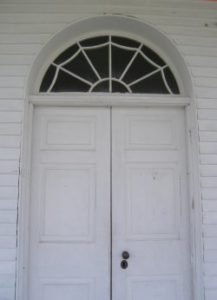
The double doors at right are the public entrance to the Court House. Note the exquisite fanlight surmounting the entrance. A tour of the building should begin by entering here, but those doors are secured by the original massive Carpenter box lock, donated by Dr. George Frederick Clarke, who obtained it from Frank Hayden. The Clerk of the Court holds the key and is not on the premises, so this tour must begin by entering the judge’s door at the north end of the court house.
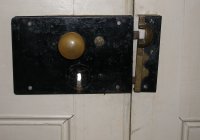
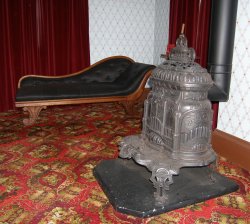
Inside the Judges’ Chamber
At left, a lovely Pratt & Perkins heater, marked Boston, Mass., 1859
At right, the Judges’ washstand.
Of course, a doorway from the Judge’s chamber opens into the main courtroom, just behind the bench.
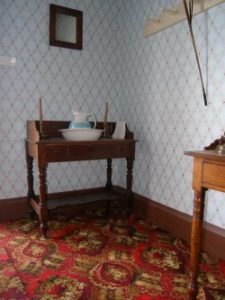
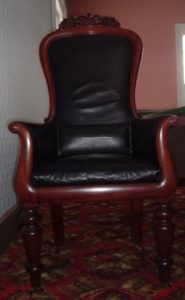
Entering the courtroom from the Judges’ chamber, a visitor can sit in the judge’s chair and have an excellent view of the courtroom, as shown below. The chair is a reproduction created by Luciano de Renzo, master carpenter at Upper Canada Village, copied from an original in the Renfrew County court house at Pembroke, Ontario.
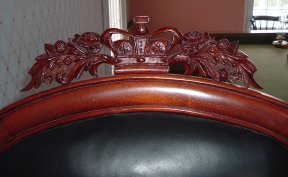
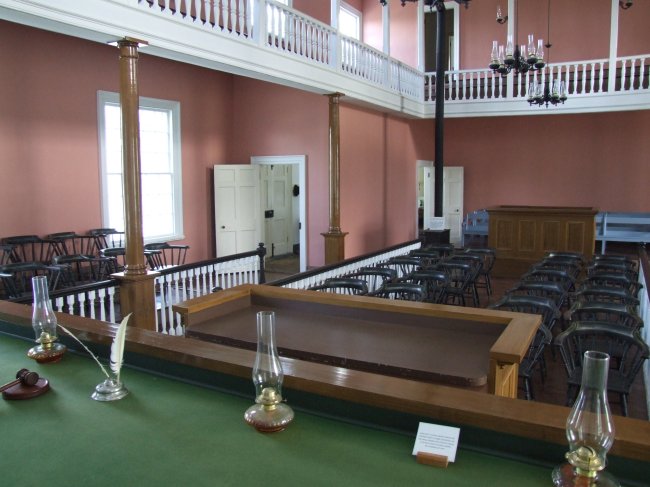
From the Judges’ bench, which is long enough to accommodate three judges, the raised platform to the left, behind the railing, holds the chairs for the jury. These chairs, and the others in the courtroom, are all original. The doorway at left, below the jury platform, provided the jurors with a route to the jury room at the south end of the building, via the front hall. The door at the back, to the left of the Prisoner’s Box, is one of the public access points.
Public balconies line three walls of the courtroom, accessible from the upper floor.

Looking to the right from the Judges’ bench, the doorway at the right rear leads through the back hallway to the barristers’ room. The washstand, with bowl and pitcher, was as essential as the law books and pens in the days of travel over rough roads by horseback or horse-drawn vehicles.
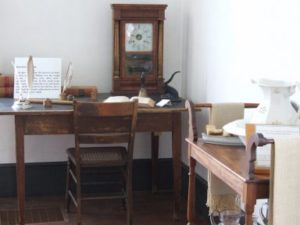
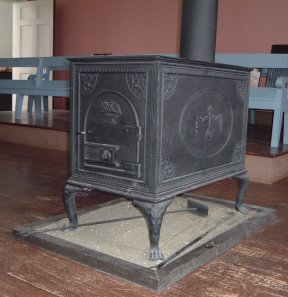
Two wood-burning box heaters at the rear attempted to provide some warmth to the courtroom. These two heaters, while historically correct in appearance, are well-crafted reproductions, made in Sackville, New Brunswick. An original box heater, obtained from another court house of similar vintage, warmed the Jury room, and a similar heater provided the barristers’ room with comfort, but the rooms on the second floor had to rely on heat rising from the courtroom.

The courtroom as seen from the prisoner’s box. The back of the judge’s chair can be seen behind the bench; a replica finally made after a long search for an original pattern. The doorway behind the bench leads to the judge’s chamber.
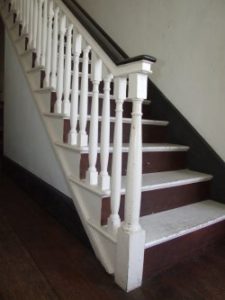
The back hallway, at right angles to the entrance hall, contains the stairway leading to the second floor, giving access to the balconies, the prisoners’ room and the clerk’s office, all of which open off the upper hall.
The hand rails and risers are originals, but many of the balusters are faithful reproductions. The stair treads are all replacements.
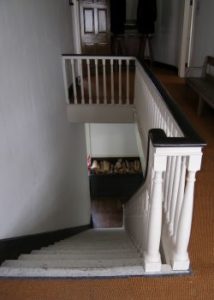
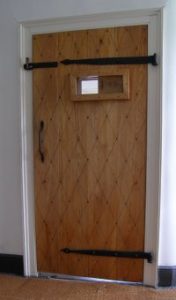
The prisoners’ room, equipped with two rough beds, boasts a heavily barred window and a stout, iron-bound door, although only lath and plaster walls lay between the occupants and freedom.

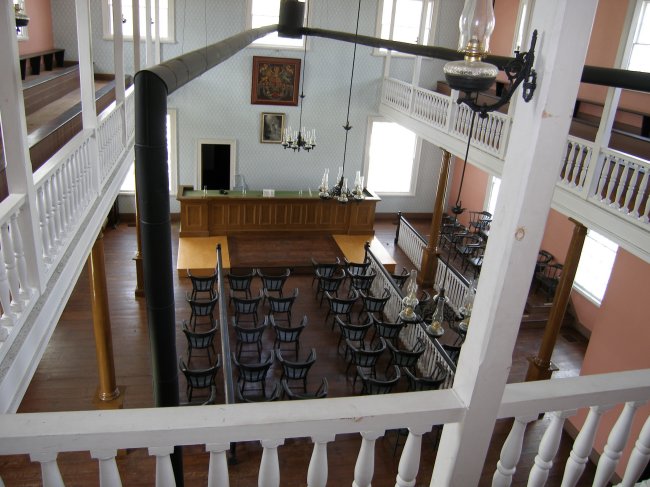
View of the courtroom from the second floor balcony. Note the stovepipes from the two box stoves that meet in a heating drum at the north end of the room. Just below the heating drum, the original coat of arms, painted by John Lee, can be seen, under which a picture of Queen Victoria graces the room.
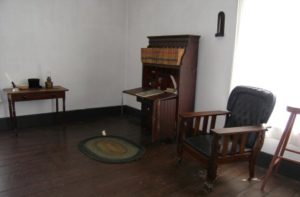
Part of the clerk’s office. Here, various records were kept and the documents necessary for the administration of justice created and filed. The seal of the Court of Common Pleas for the County was in the custody of the clerk.
